The Cadiz sun, the one that gives off a particular light, intense and warm, that embraces its territory with tenderness, accompanies us on this day that feels different. Special.
We feel it from the very moment in which, in the distance, we catch a glimpse of the silhouette of Juan and Ricardo on their small barge while they gently, silently cross the waters of the marshes to which they have dedicated half their lives. We are in the Barbanera salt flat , formerly part of a whole made up of three other salt flats. Without a doubt, one of the most beautiful in Cádiz.
This is how the plan for the day begins. An experience that we live hand in hand with Salarte, an organization founded in El Puerto de Santa María in 2012 and focused on recovering, managing and valuing the great intangible heritage —that knowledge that passes from generation to generation for centuries— of the salt marsh . At the head of the project, Juan Martinete, an environmentalist who loves this land and deserved, just a few months ago, the National Award for Gastronomic Innovation for its marine grain project with Aponiente.
When we come to realize it, we have traveled on foot sand lanes guarded by the immense natural bathtubs that constitute the estuaries, until reaching the place where the Machaca brothers —Ricardo and Juan— continue, patiently, with their work. So now, let's open our eyes wide: we are witnessing an art , the one of the estuary fishing , which has been developing in the area for more than two thousand years.
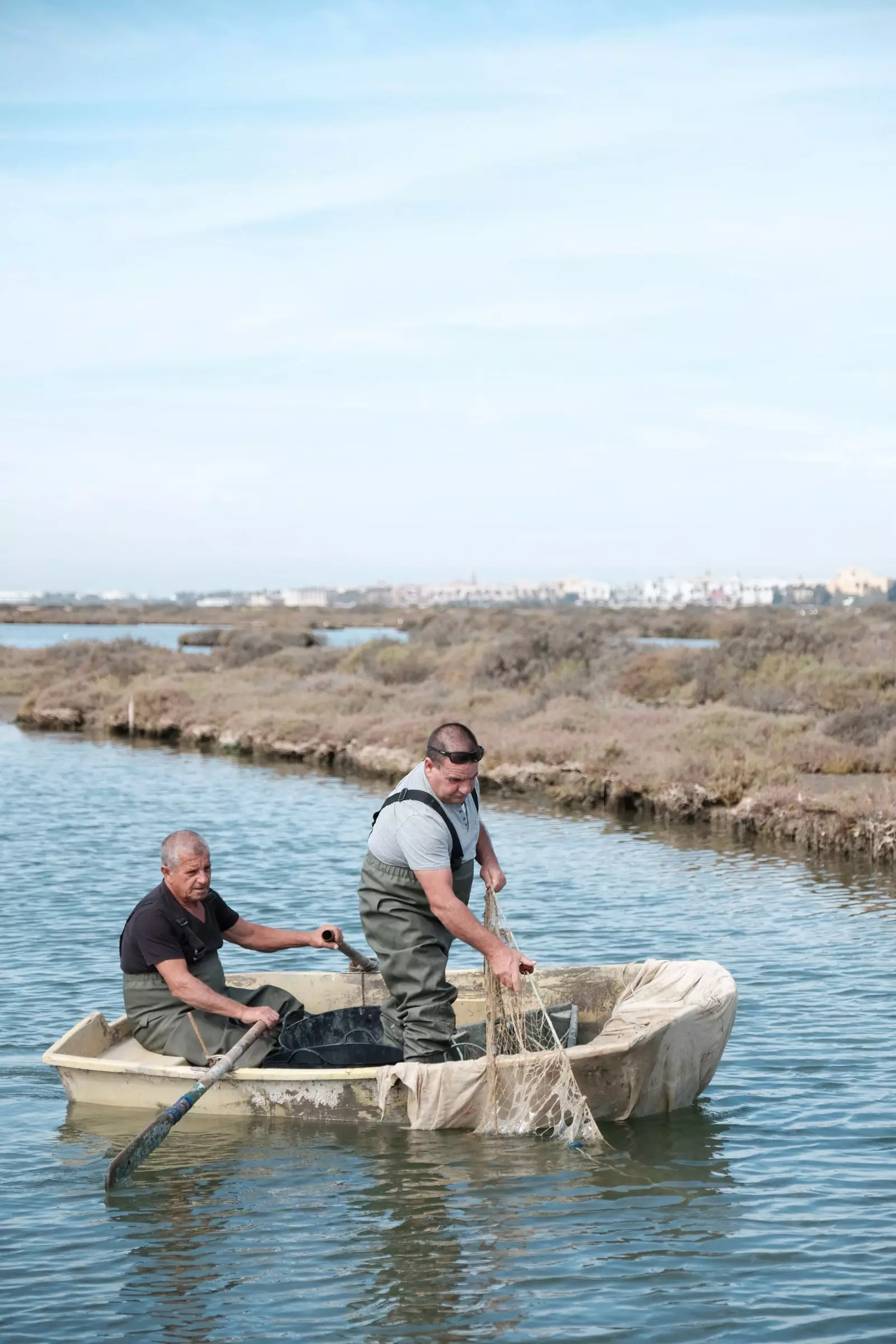
The art of taking off.
THE IMPORTANCE OF UNDERSTANDING
Exactly: because to value, you must first know. Understand what is relevant, not only in the scene we are witnessing, but also in the place where we find ourselves. We have entered fully into the soul, into the true heart of the Bahía de Cádiz Natural Park: the largest tidal wetland in the Iberian Peninsula.
This little piece of natural Eden, transformed centuries ago by man, extends along 10,500 hectares covered by five urban centers : Puerto de Santa María, Chiclana, San Fernando, Puerto Real and Cádiz. A unique and peculiar place for what it means, and for what it is: more than 127 species, including fish and molluscs, inhabit the estuaries of the Bay. Salinas that in the past came to form an entire economic empire for the area; he he salt produced here reached the ends of the world , to places like Alaska or Uruguay.
But if the good times came, it was thanks to the fact that man was able to see the potential of the ecosystem that nature itself offered him. Thus, it turned the marshes into salt flats, creating with the water that came directly from the Atlantic, a whole route divided into different stages in which the salt from the sea was concentrating more and more —the pike, the longtail, the retention loop, the tour of periquillo or the crystallisers— until you get that long-awaited white gold . And he did it by controlling the tidal channels: they opened and closed gates with which they let the water pass at will.
However, in order not to depend on the tides —which here change every six hours— and for all the fauna and flora that inhabits the area to be affected by constant disturbances, they needed to have a permanent water store from which they could always be supplied. That was the role of the estuaries, huge tubs where the mother water was kept and with which they ensured its availability.
The positive thing is that, being constantly watered with ocean water, they arrived loaded with life: with thousands of fish and shellfish living in this kind of spa , without current or predators, estuary fishing emerged. A practice that continues to be carried out exactly the same today.
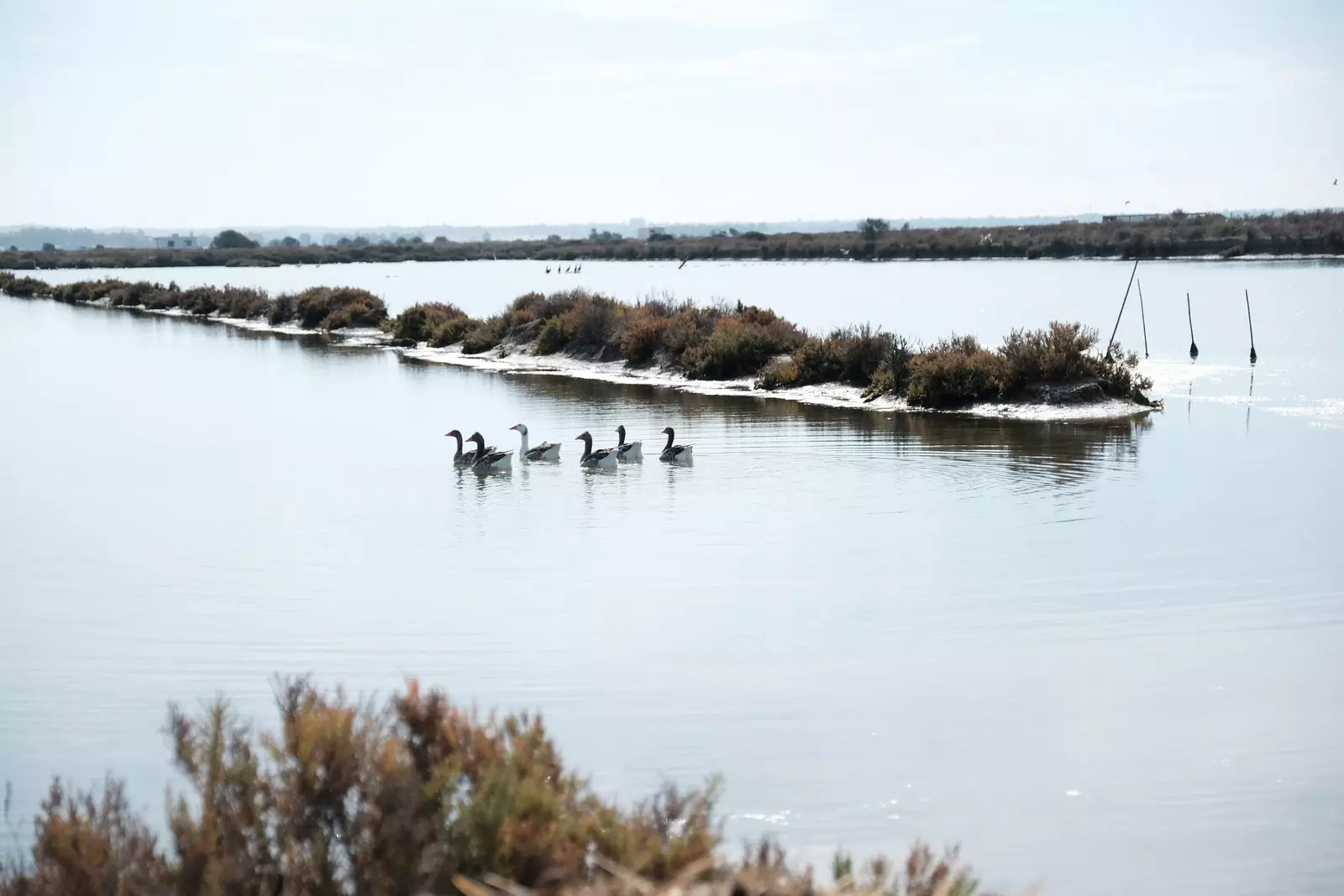
A nature spa.
THE STORY BEHIND THE PROTAGONISTS
We continue to observe with admiration the leisurely movements of Ricardo and Juan, who hours before, even early in the morning, had already approached this same place to "penetrate the trammel net". That is, to place and fix the three superimposed net meshes that make up the rig and deploy it at the bottom of the estuary, which is between three and four meters deep.
Now what they do is collect the catch . Carefully, while Juan controls the direction of the boat with the oars, Ricardo retrieves the nets from the bottom of the water, pulling them little by little. From the apparent tangle —this is only for those of us who don't understand— he begins to extract soles, slippers —juvenile sea bream— and even cuttlefish. The number of copies begins to add and add , and the only thing that crosses our minds is: “Mother of God, what a feast awaits us!”
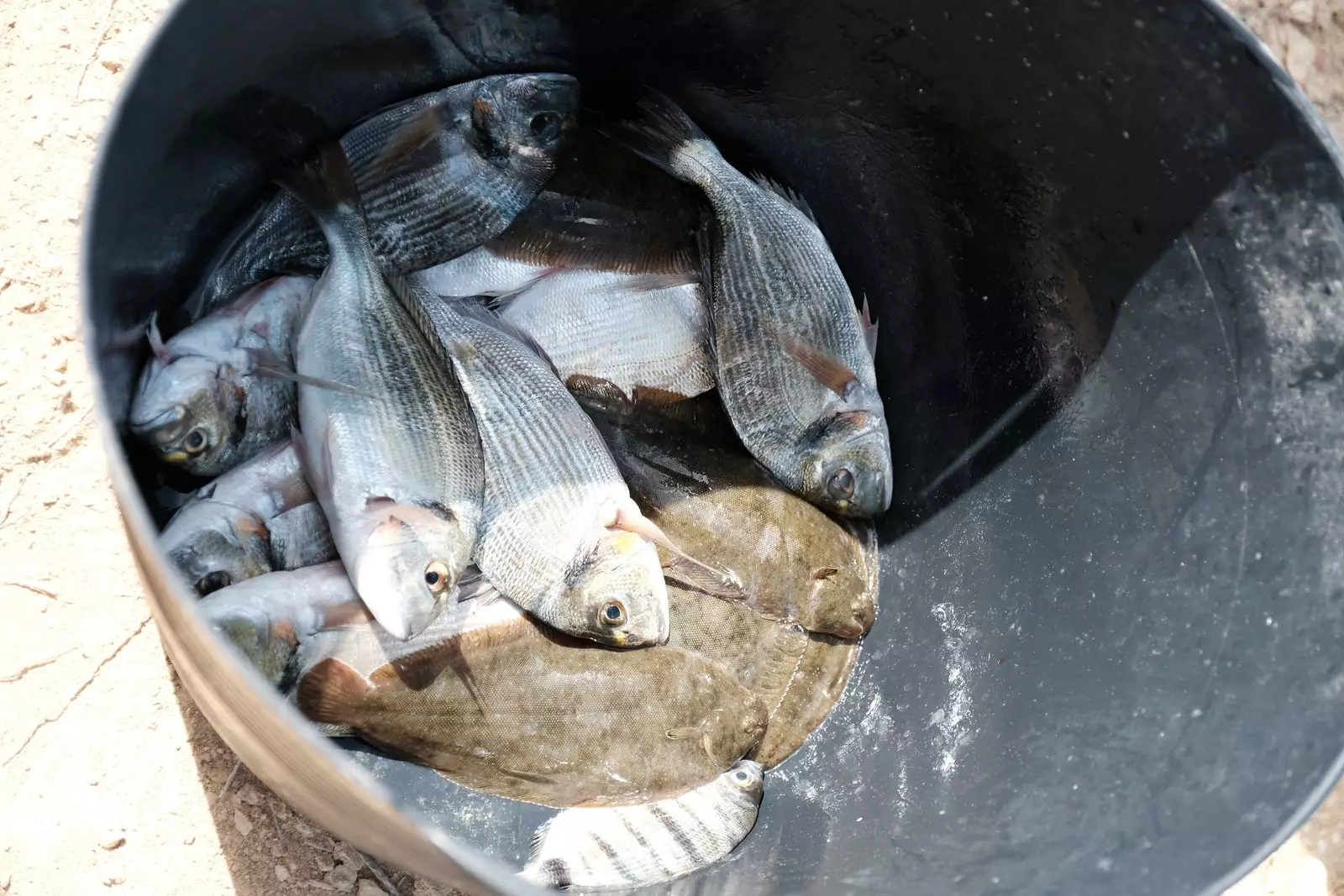
The feast!
The first to return to solid ground is Ricardo, who brings with him the loot. We begin to retrace our steps alongside them while all kinds of birds fly over us (it is easy to spot species such as the osprey, the black stork, the crane or the spoonbill in the area). As we watch the show, the talk starts.
And it was not necessary for them to confirm it to us -it was already to be intuited-, but the Machaca tell us about the past and how they grew up behind a salt mine just like the one we are in . Their father, also a worker in the marshes, instilled in them the trade from a very young age, and even then there was no doubt: they would both follow the tradition.
Today, after a lifetime dedicated to it, the passion for this tradition and the effort has given them many rewards. The knowledge in the management of the estuaries and in the control of their waters has earned both of them to work for the great Ángel León. Ricardo is the shellfisher, fisherman and caretaker of the marine cereal of the chef of Aponiente. He has been collaborating with him for many years. Both he and his brother supply the fish restaurant. Of the best.
Suddenly, in the background, a group of flamingos gives us a flight over the marshes and reminds us once again what kind of paradise we are in. At the same time, we reached another estuary to collect a new catch. This time, from shrimp.
Juan, dressed in his boots and his waterproof overalls, goes into the water and lifts the net that, on one of the banks, has been collecting for hours what will be an essential part of today's menu. He pours what he has obtained into a box and —oh, surprise!— There are also prawns. There is no remedy: we have begun to salivate.
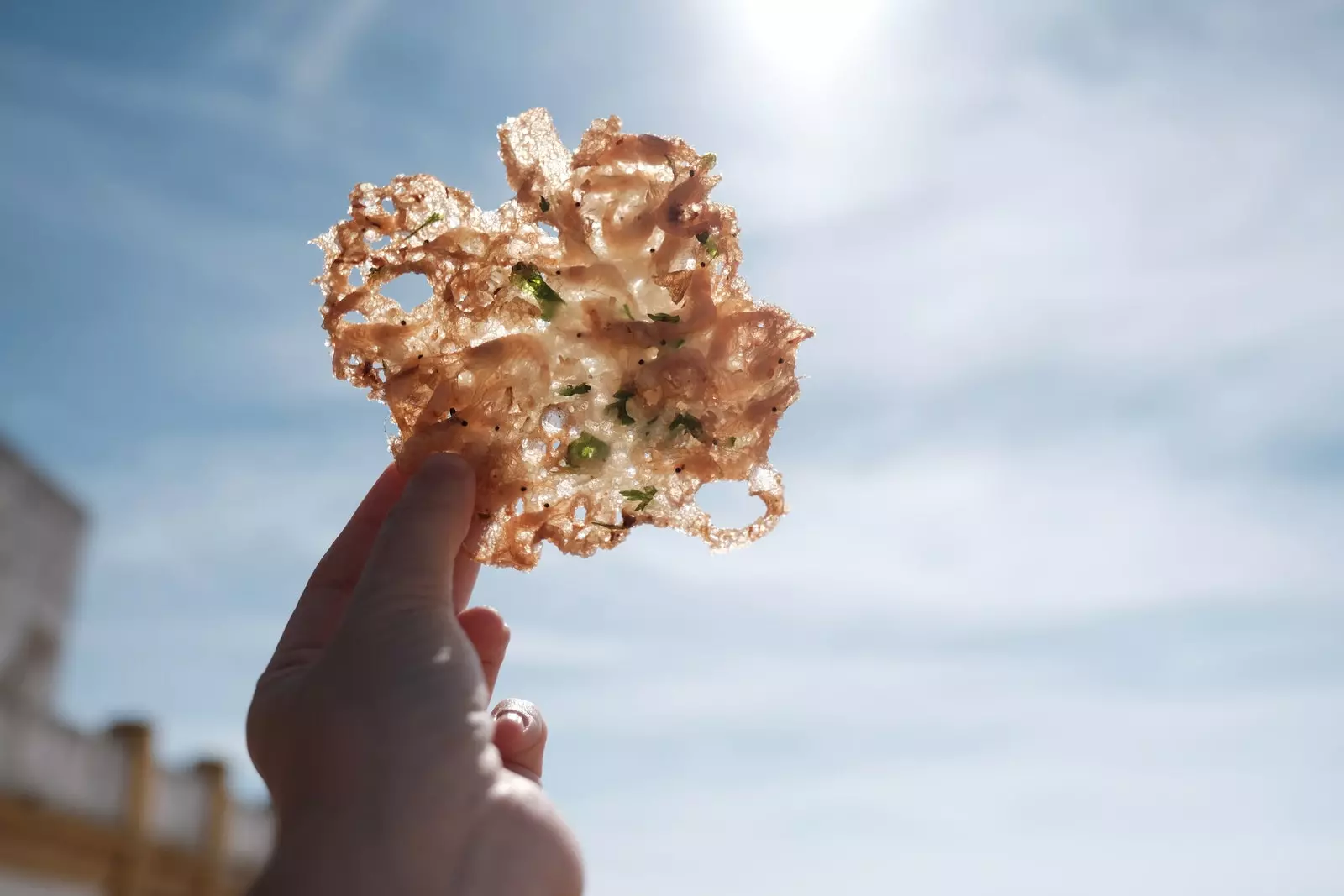
Shrimp tortillas, crispy and on point.
THE TABLE IS SET: IT'S TIME TO EAT
At one end of the farm is the farmhouse. Humble in appearance —why do we want more?—, next to the entrance it has pots full of flowers and a trellis that provides the ideal shade for lunch. There, a ready table awaits what is to come.
A family of cats amuse themselves with their romp by the outdoor dining area, while just beyond, a flock of ducks flutter. Inside, in the kitchen, Isabel, Juan's wife, has put the oil to heat on the stove, and with the skill of someone who has done this same job many —many— times, she begins to fry the Shrimp fritters . Or rather: her shrimp omelette. Crispy and on point, as they should be.
Our luxury chef has no qualms about explaining the key ingredients so that this Cádiz delicacy lacks nothing: wheat and chickpea flour, onion, water, parsley, salt and fresh shrimp . The fact that it goes out to order like yours, that already, is something else; it requires knowledge and practice that cannot be learned in a day.
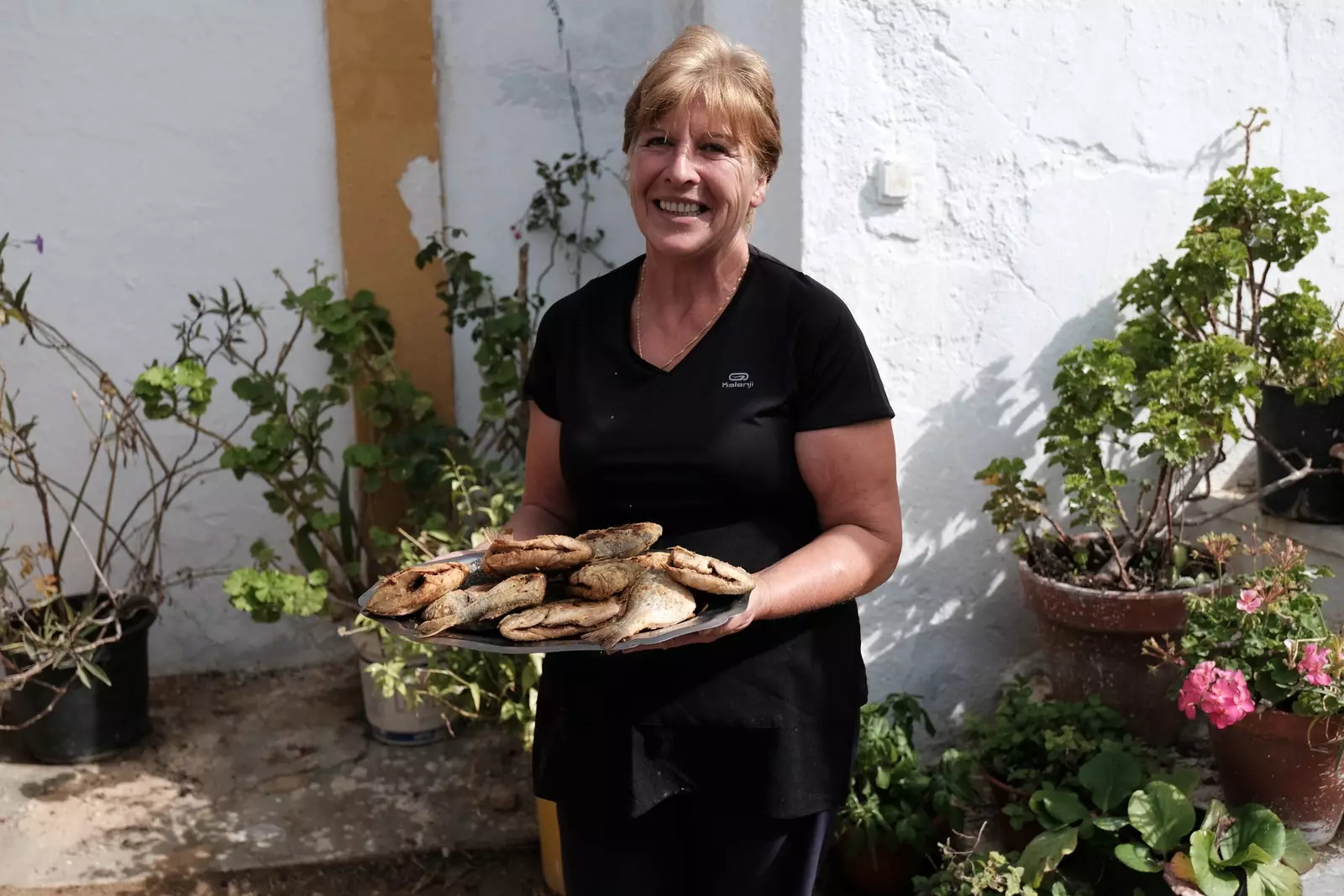
Isabel, the perfect hostess.
On the table, the banquet is joined by cooked prawns that take your breath away, a scramble of salicornia collected from the banks of the estuaries that leaves us perplexed , and a good assortment of fried estuary fish with a lot of art and brimming with flavor. To liven up, something from Tío Pepe —you have to sweep home— and a conversation about the divine and the mundane that goes on with our hosts until coffee and cake.
Anecdotes, stories and lots of laughs accompany this magnificent lesson on what it is like to embrace traditions and trades that are sometimes forgotten. A day that has allowed us to fully immerse ourselves in a way of life , that of fishing in the estuary and salt flats , through its protagonists, blessed conservatives of southern living history.
And the best: in an earthly paradise like the Bay of Cadiz Natural Park . With this plan, let's see who is smart enough to get up from the chair. Let us enjoy a little more.
See articles:
- Salinas de Iptuci, mountain salt with a Cádiz accent
- An excuse full of art and design to return to Vejer de la Frontera
- Banished crop: the Cadiz project that has revolutionized agriculture through design and sustainability
- A community garden (and lots of surfing) to change the world from El Palmar
